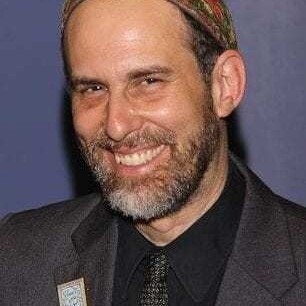We are once again at the brink of a Middle East peace conference and Syria's attendance remains unlikely. U.S. and Israeli policy makers continue to speculate about the sincerity of Syrian involvement, and consequently the Syrians have dismissed the forthcoming meeting as a "waste of time." The most significant point of contention between Syria and Israel remains the disputed mountainous region of Golan, which Israel has occupied since 1967. In order to have meaningful engagement from Syria, creative solutions to the Golan conflict must be on the agenda of the proposed Annapolis meeting that Secretary of State Condoleezza Rice is planning.
Interestingly, the original Druze inhabitants of the region see themselves as distinct from Israelis and Palestinians since their religious group has its own culture and ethnic identity. The Golan Heights has a population of about 38,900, of which 19,300 are Druze, 16,500 are recently settled Jewish immigrants, and about 2,100 are Muslim. Golan is also an environmentally sensitive region with a cool and moderately wet climate that has allowed fruit orchards to flourish. Underscoring the unique environmental conditions of this area, Israel has allowed Druze farmers to export some 11,000 tons of apples to Syria each year since 2005.
This confluence of interests makes the region an ideal case for implementing a novel dispute-resolution strategy known as environmental peace-building. The strategy involves transforming disputed border areas into transboundary conservation zones with flexible governance arrangements. Such territorial arrangements are increasingly called peace parks. To some realist commentators this term may suggest idealistic or naive notions of conflict resolution, but it is championed even by military officers, such as retired Indian Air Marshal K. C. "Nanda" Cariappa, a former POW who has called for such a strategy to resolve India and Pakistan's dispute over the Siachen glacier.
Earlier this year an old proposal for resolving the Golan conflict was resurrected by Syrian-American negotiator Ibrahim Suleiman and former director-general of Israel's foreign ministry Alon Liel. They met with the Israeli Knesset's Foreign Relations and Defense Committee to develop a plan to establish a jointly administered peace park between Syria and Israel in the Golan. The proposal was initially motivated by Robin Twite's work at the Israel-Palestine Center for Research and Information during the 1990s. Now the strategic plan for the effort has been laid out in detail and the momentum is there to move forward on this solution, which is feasible in the Golan given the demographics of the region. According to the plan, Syria would be the sovereign in all of the Golan, but Israelis could visit the park freely, without visas. In addition, territory on both sides of the border would be demilitarized along a 4:1 ratio in Israel's favor.
When one looks at the stalemate between Israel and Syria over the Golan Heights it is clear that neither side is willing, at present, to relinquish its claim to that important piece of Middle East real estate. Syria has a legitimate claim on the basis of recent history, while Israel has a claim based on the ruins of 29 ancient synagogues, and more importantly as a security buffer. One way to break through this stalemate of legitimacy is to phrase the dynamic in a different way. That is to say, it is not so much that Israel wants to keep the Golan Heights, but that they don't trust giving the Heights back to Syria. At the same time, while it is important for Syria to have the Golan Heights back under her rule, she is more motivated not to have Israel remain there.
This understanding of the dynamic opens up possibilities for a new scenario whereby a third party is involved. In addition to the peace park proposal, it is also possible to set up a Druze Autonomous Area that is neither Israeli nor Syrian but jointly administered by a commission. Similar proposals have also been initiated by Friends of the Earth Middle East along the Jordan River, and there is, at least on paper, a marine peace park between Jordan, Israel, and Egypt in the Gulf of Aqaba (which was established as part of the first round of Oslo negotiations). The Golan proposal is geographically much more significant in terms of its joint-management potential and also as a means for instrumental conflict resolution between two states that currently do not recognize each other.
Following the recent air strike by Israel on a suspected nuclear site in Syria, tensions are again running high. Syria announced on October 24 that it is issuing identity cards to Druze inhabitants in the Golan (only ten percent have Israeli citizenship). At the same time, Druze inhabitants in Israel have started protests about discrimination. While prospects for a peace deal may seem distant these days, the Golan peace proposal is much easier to implement than some of the other complicated territorial arrangements proposed for the West Bank and Gaza.
Putting a Golan Heights Peace Park on the Annapolis conference agenda may help garner wider support among Arab states and also facilitate stabilization in Iraq since Syria is a significant player on that front as well. Territorial bargaining with environmental factors in mind has proved successful in other conflicts, such as between Ecuador and Peru in the Cordillera del Condor region in the 1990s. The establishment of a jointly managed conservation zone was instrumental in resolving that dispute, which was mediated by the United States twelve years ago. It is high time that we consider ecological solutions in the Golan conflict, which is demographically and spatially configured for green diplomacy.
Saleem H. Ali is associate dean for graduate education at the University of Vermont's Rubenstein School of Environment and editor of the new book Peace Parks: Conservation and Conflict Resolution (MIT Press). Rabbi Michael Cohen is the director for special projects at the Arava Institute for Environmental Studies in Israel.





